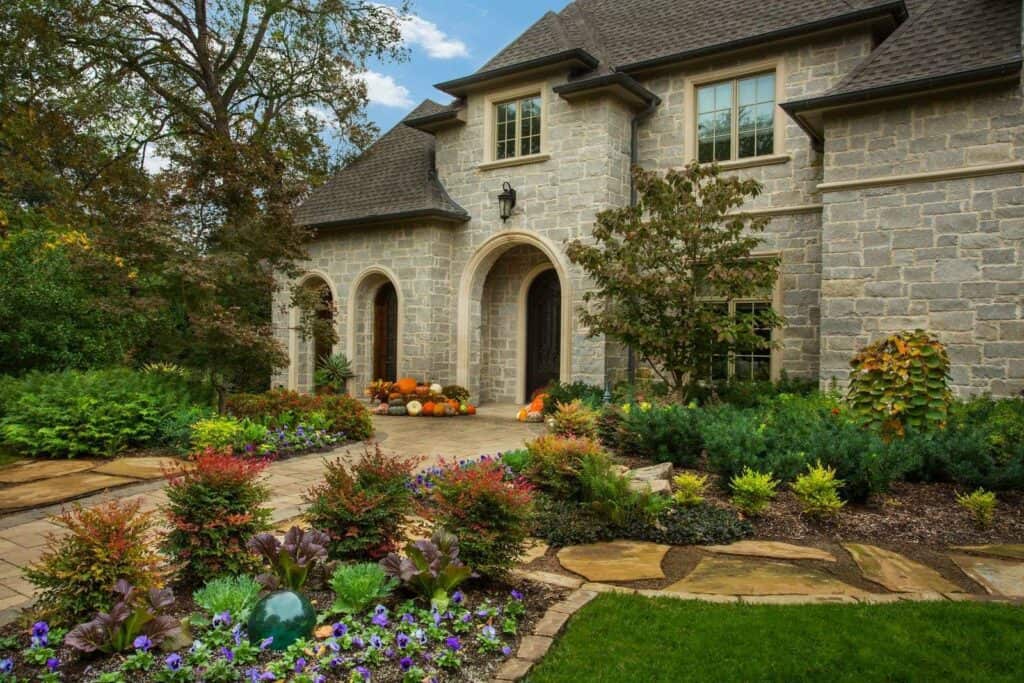The Best Strategy To Use For Landscape Design
Table of ContentsLandscape Design Things To Know Before You Get ThisThings about Landscape DesignLandscape Design Things To Know Before You Buy3 Easy Facts About Landscape Design Shown
When making a property landscape, the most crucial action is to put a plan on paper. Establishing a master plan will certainly conserve you time and money and is more probable to lead to a successful layout. Landscape Design. A plan of attack is developed through the 'layout procedure': a step-by-step technique that considers the ecological problems, your desires, and the elements and principles of styleThe five actions of the style procedure consist of: 1) performing a site stock and evaluation, 2) determining your demands, 3) producing useful layouts, 4) developing conceptual layout strategies, and 5) drawing a final layout strategy. The first three actions establish the visual, useful, and horticultural demands for the layout. The last 2 actions after that apply those needs to the development of the final landscape strategy.
This is a critical action for both plant choice and placement and finding family members tasks and features. It is very important because the same environment conditions that impact the plantstemperature, moisture, rain, wind, and sunlightalso affect you, the individual. The following action is to make a listing of your demands and desiresthis assists you determine exactly how your backyard and landscape will certainly be used.
The practical layout is after that utilized to find the activity rooms on the site and from this layout a theoretical plan is established - Landscape Design. The last action is a last layout that consists of all the hardscape and growing details that are required for installment. Throughout the layout procedure there are ten important things to take into consideration: for plant selection and activity place by considering what you desire and need to assist figure out forms and organize rooms by marking task areas and relating to elements for both the atmosphere and the user by making use of massing and layering techniques such as shift locations and centerpieces in the products, the colors, and the surface appearances for the development and maintenance of plants by utilizing lasting style practices A detailed supply and analysis of the site is necessary to figure out the environmental conditions for plant growth and the most effective use of the site
Top Guidelines Of Landscape Design
The sort of dirt establishes the nutrients and wetness readily available to the plants. It is constantly best to utilize plants that will certainly grow in the existing dirt. Although soil can be modified, amendment is typically expensive and many site link times inefficient. Existing vegetation can give hints to the soil type. Where plants grow well, note the soil problems and use plants with similar growing requirements.

Sun/shade patterns, the quantity and length of direct exposure to sunlight or shade (Number 1), produce microclimates (in some cases called microhabitats). Recording site conditions and existing plant life on a base map will certainly expose the area of microclimates in the lawn. Plants generally fall under 1 or 2 of four microclimate categories-full sunlight, partial color, color, and deep shade.
Number 1. Sun and shade patterns. Debt: Gail Hansen, UF/IFAS It is necessary to note all the existing problems on an exact base map when doing the site inventory (Figure 2). Landscape Design. Utilities such as Your Domain Name power lines, sewage-disposal tanks, underground energies and roofing system overhangs identify plant area. Utilize a land surveyor's plat of your residential property for the limits and location of your home.
5 Simple Techniques For Landscape Design
Budget plan concerns consist of the materials, initial setup costs and the on-going upkeep prices. Figure out the time and money you agree to take into maintaining the plants and hardscape-be realistic regarding your intentions and capacity. Number 3. Current usage locations. Credit Rating: Gail Hansen, UF/IFAS Figure 4. Proposed usage locations. Credit Rating: Gail Hansen, UF/IFAS There are several landscape layout styles- from simple to complex, however it is handy to select one to guide your plant and product option.

Determine if you wish to open your yard, close your lawn, or a little of both, to these sights. In other words, do you desire the garden to confine the space around you and connect mostly to your home, or do you want the yard to open views and look outward, connecting to the surroundings? This will give you a beginning indicate think of a motif.
Landscape Design Things To Know Before You Buy

Every yard should have a form style, however not all gardens have a design theme. Several property yards have no particular design other than to blend with the residence by repeating information from the design such as products, shade, and type.
In a type style the organization and shape of the areas in the lawn is based either on the form of your home, the shape of the areas between your home and the residential or commercial property borders, or a preferred shape of the homeowner. The type motif figures out the form and company (the format) of the spaces and the links in between them.
